There’s something magical about seeing butterflies flutter through your garden on a warm day.
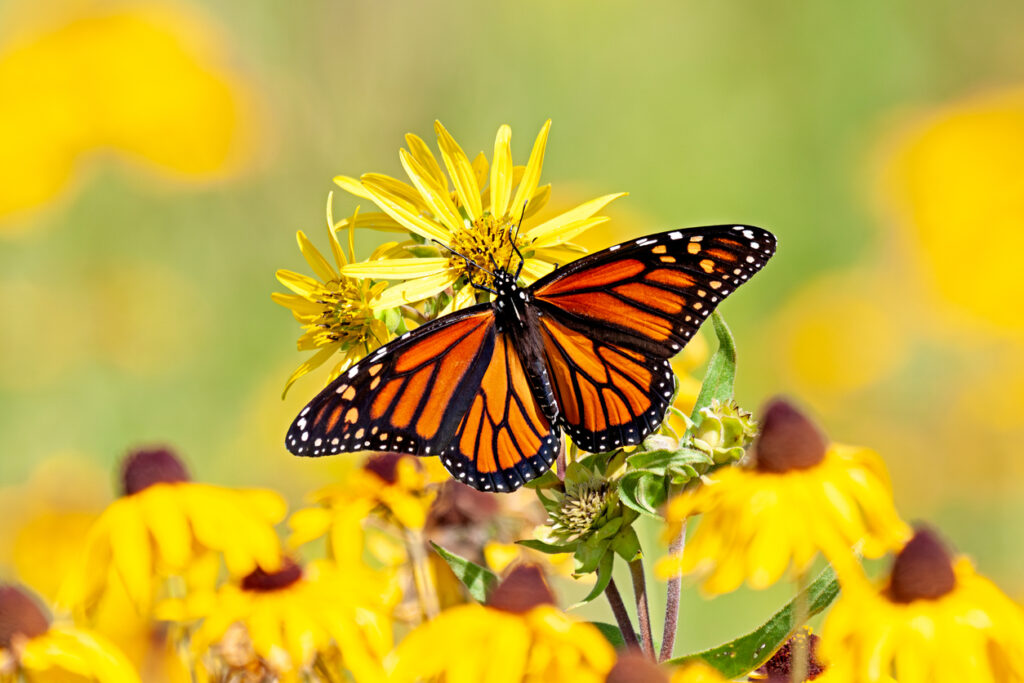
However, if they’re not showing up, chances are your space isn’t giving them quite what they need. In the UK, more than half of butterfly populations are in serious decline, so while there may be fewer of them in general, there are still ways to attract them and encourage their proliferation. From nectar-rich flowers to sun-drenched shelter, here are some simple easy ways to turn your garden into a butterfly haven.
1. Plant nectar-rich flowers.
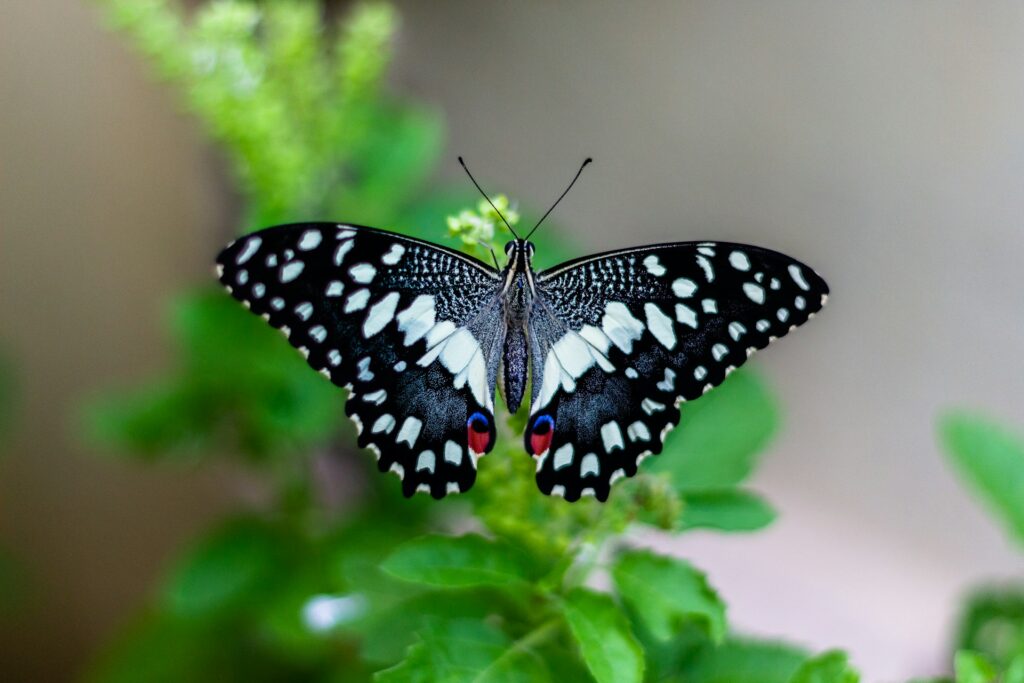
This is the absolute basic starting point. Butterflies feed on nectar, so planting blooms like buddleia (also known as the butterfly bush), lavender, and verbena is essential. Aim for a good mix of colours and staggered bloom times. The key is to have something flowering from spring to autumn. Butterflies are drawn to reliable sources of nectar, and if your garden delivers, they’ll keep coming back.
2. Let the sunshine in.

Butterflies are cold-blooded, which means they rely on external warmth to get going. Sunny patches of garden are like tiny charging stations—they’ll often bask with wings open to absorb the heat. Leave some open areas without shade or dense plant cover, especially in the morning. A flat stone or two placed in sunlight can become prime real estate for early risers.
3. Grow native plants.
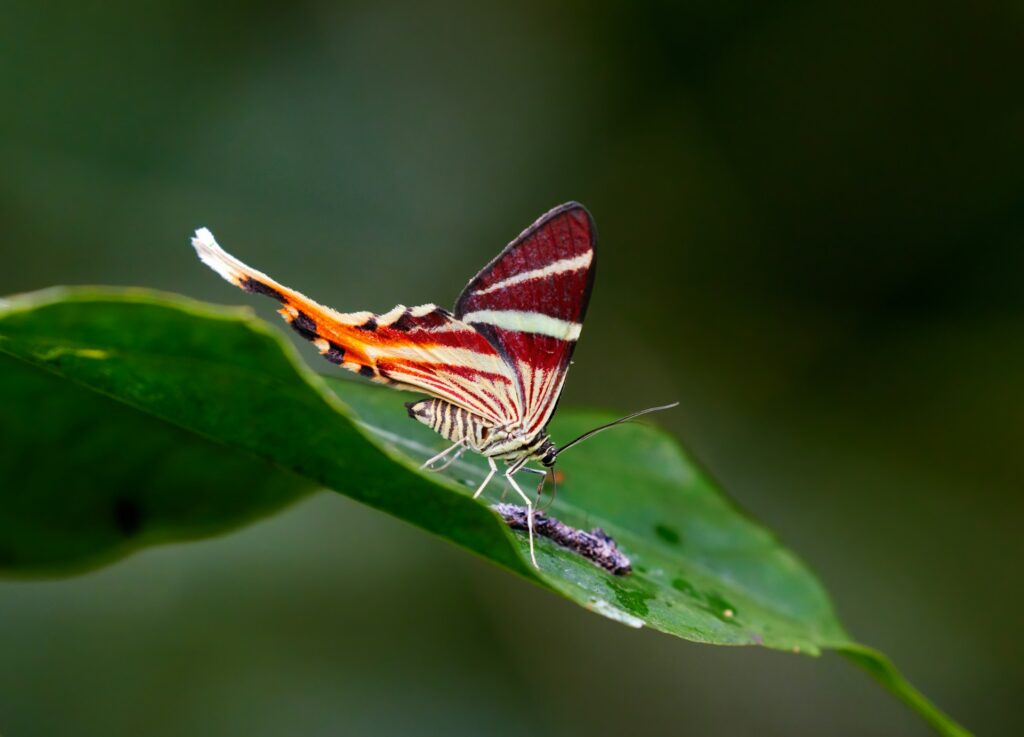
Native species are more likely to attract local butterflies because they’ve evolved together. These plants provide not only nectar, but also essential food for caterpillars (which is half the butterfly’s life cycle, after all). Check what’s native to your region and mix it into your flower beds. In the UK, for example, wild marjoram, field scabious, and bird’s-foot trefoil are great choices.
4. Add caterpillar food plants.
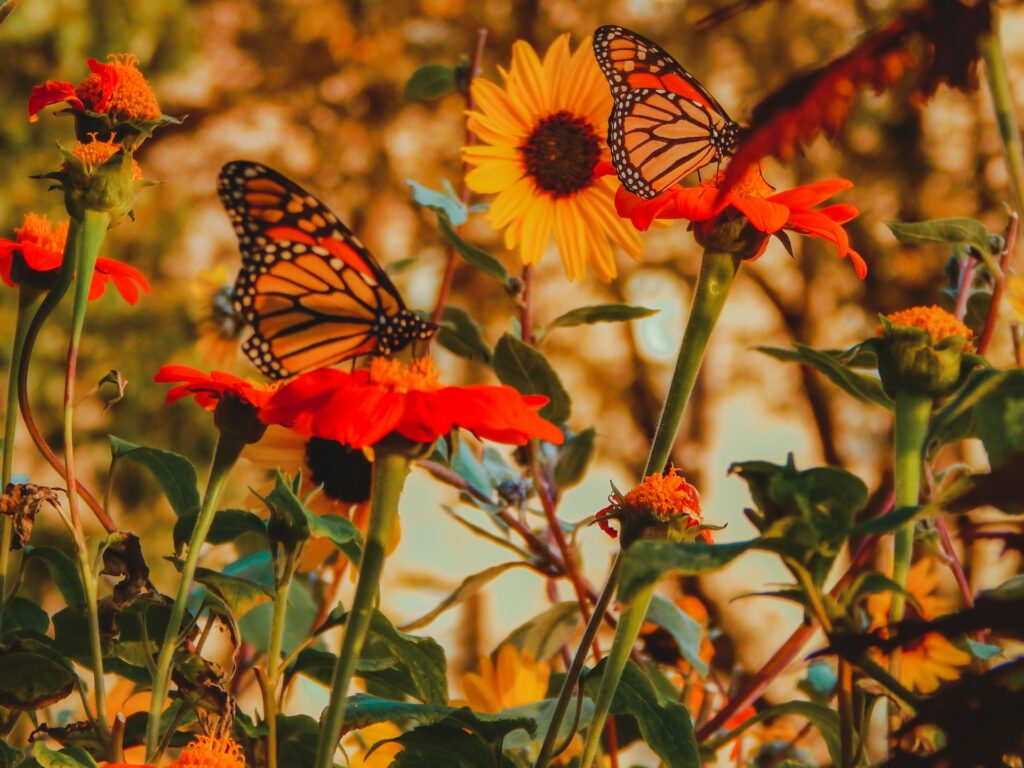
You can’t have butterflies without caterpillars, and that means you’ll need plants they can feed on. This might mean a few holes in your leaves, but it’s a small price for winged beauty. Different species have different favourites. Nettles are the go-to for peacock and small tortoiseshells, while holly and ivy attract holly blues. A varied garden helps support more butterfly types.
5. Avoid pesticides.
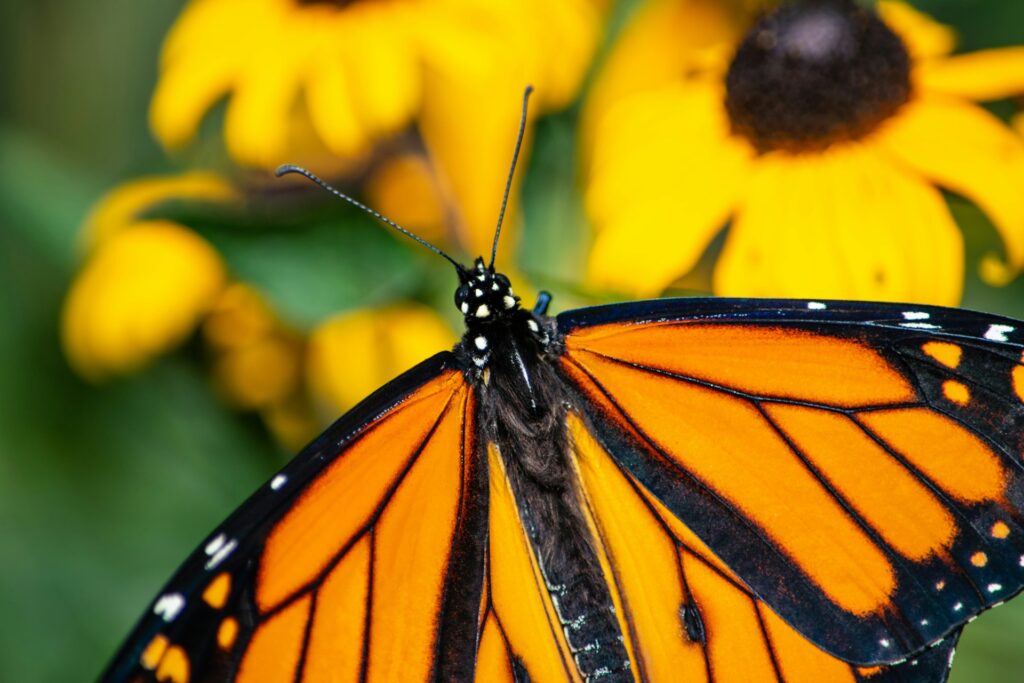
Pesticides, even the ones that claim to be “bee-friendly,” are usually bad news for butterflies. They can harm both the adult insects and the caterpillars that depend on your plants. If you really need to manage pests, try natural methods like companion planting or encouraging predator insects like ladybirds. A little imbalance is normal, and butterflies are worth the trade-off.
6. Provide water (but not too much).
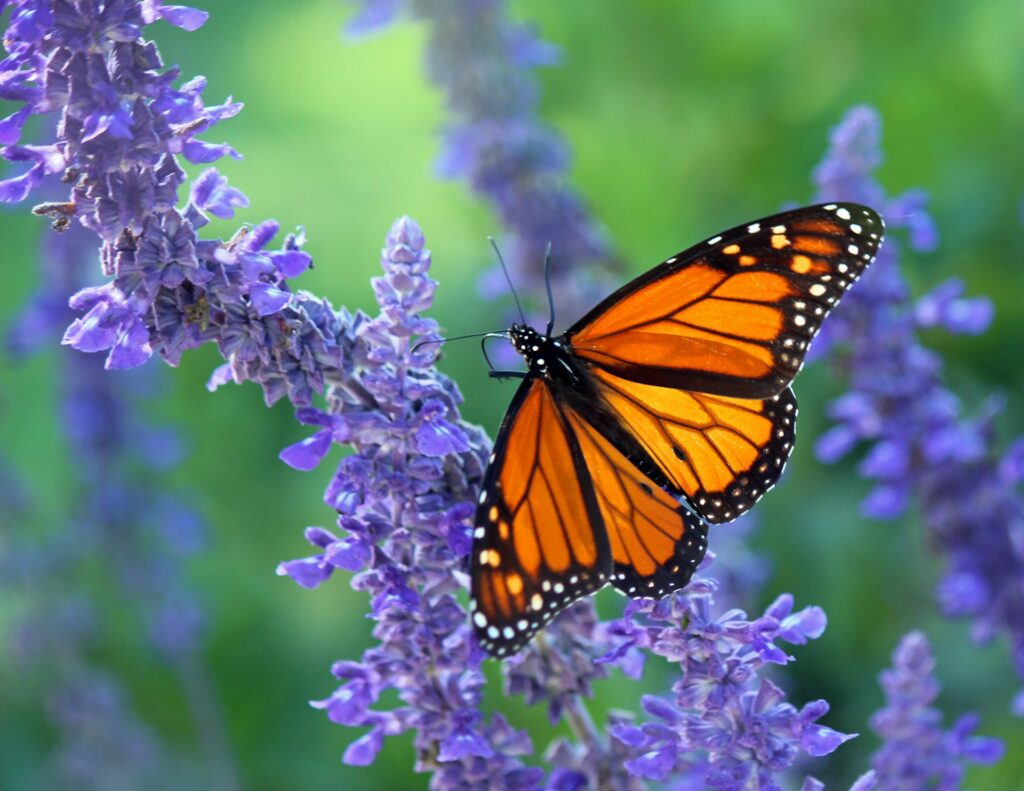
Butterflies don’t drink from deep birdbaths. They prefer to “puddle”—which means sipping from shallow, muddy water that’s rich in minerals. It’s weird but true. To offer this, fill a shallow dish with moist sand and a few small stones. Keep it damp and in the sun, and you’ll likely spot butterflies stopping by for a quick mineral recharge.
7. Choose purple, red, and yellow flowers.
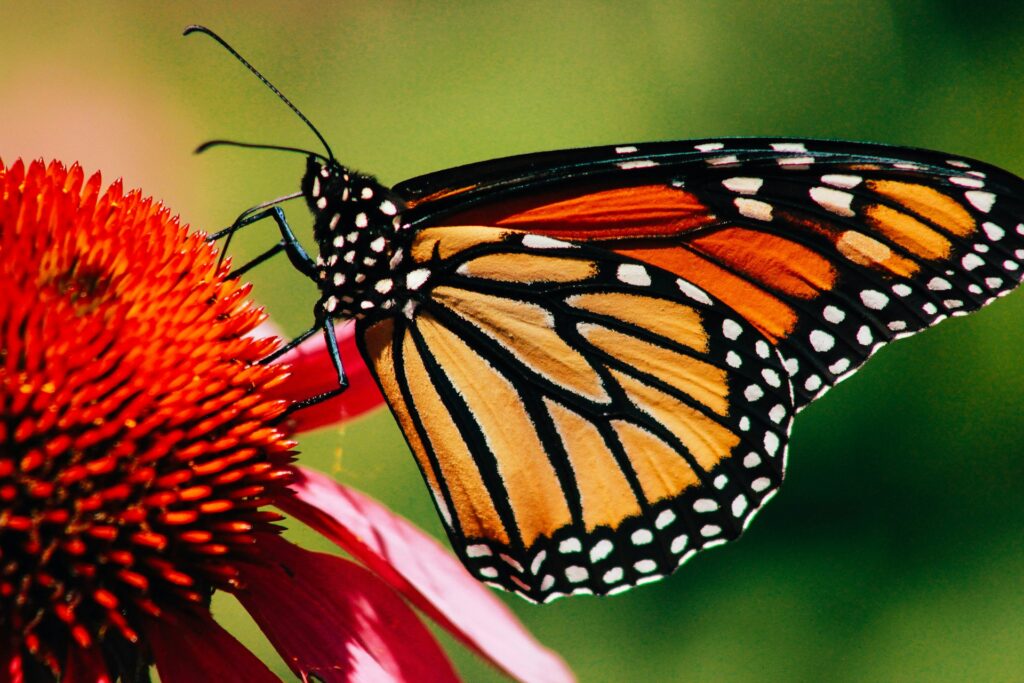
Butterflies can see ultraviolet light and tend to prefer certain colours—particularly purple, red, pink, and yellow. These shades stand out to them much more than white or green. If you’re planning a flower bed specifically for butterflies, lean into bold, bright hues. It’s not just about aesthetics—they really do find these colours easier to spot and more inviting.
8. Keep plants in sunny spots.
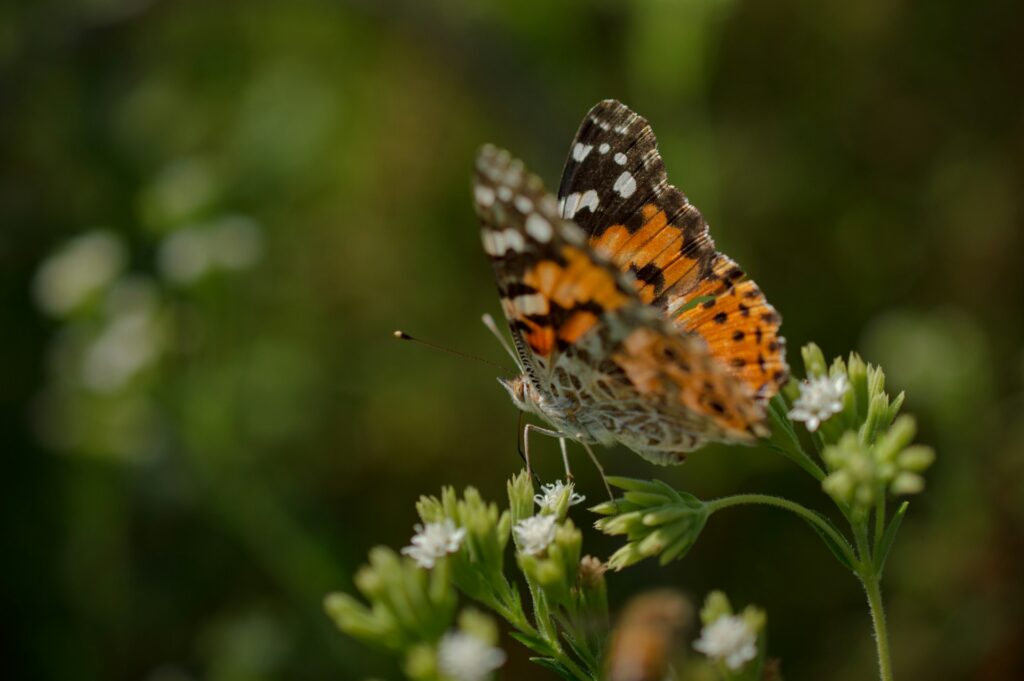
Even if you have great nectar flowers, they won’t do much good if they’re hidden in the shade. Butterflies prefer to feed in the sun because it helps keep their bodies warm while they eat. Place butterfly-friendly plants in south- or west-facing areas whenever possible. Grouping flowers together in sunny clumps makes it easier for butterflies to find and enjoy them.
9. Skip the mulch in some areas.
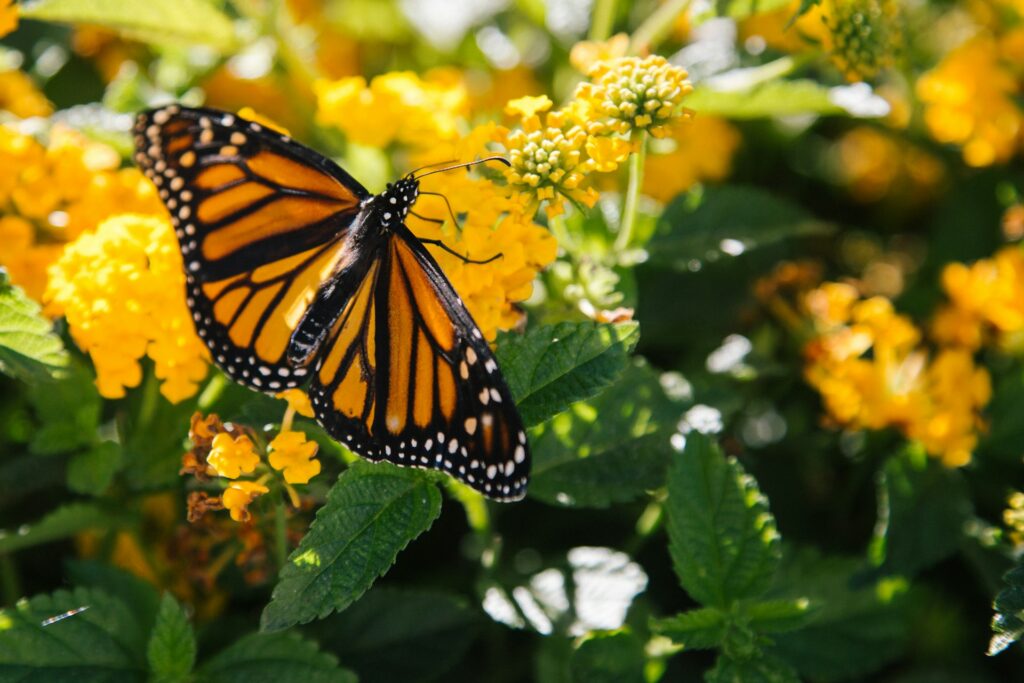
While mulch can help with moisture and weeds, it also makes the ground less friendly for some butterfly species. Many lay eggs in the soil or overwinter as chrysalises just below the surface. Leaving a few natural, unmulched patches gives them a place to complete their life cycle undisturbed. It may not look polished, but it’s incredibly beneficial for wildlife.
10. Provide shelter from wind.

Butterflies don’t like strong wind—it makes flying difficult and feeding a challenge. Even a light breeze can send them off course. So, windbreaks help create a more welcoming garden space. Use hedges, shrubs, or even a garden wall to create calm, protected areas. Dense planting can also create mini microclimates where butterflies can rest and feed in peace.
11. Leave some wild corners.
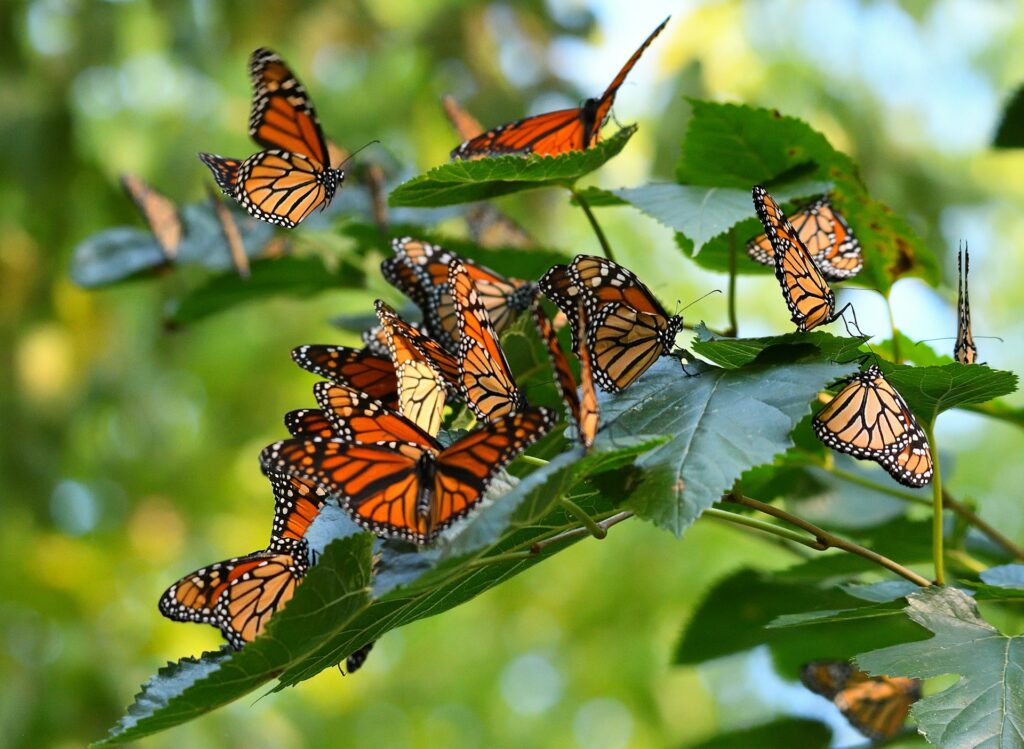
Butterflies don’t need your garden to be perfect. In fact, they thrive in slightly messy, less-manicured environments. Leaving a patch of grass to grow wild or letting dandelions bloom can make a big difference. These wild areas give butterflies a chance to find unexpected nectar, lay eggs, or hunker down during bad weather. You don’t need to go full rewilding—just ease up in one corner.
12. Grow herbs like mint, thyme, and oregano.
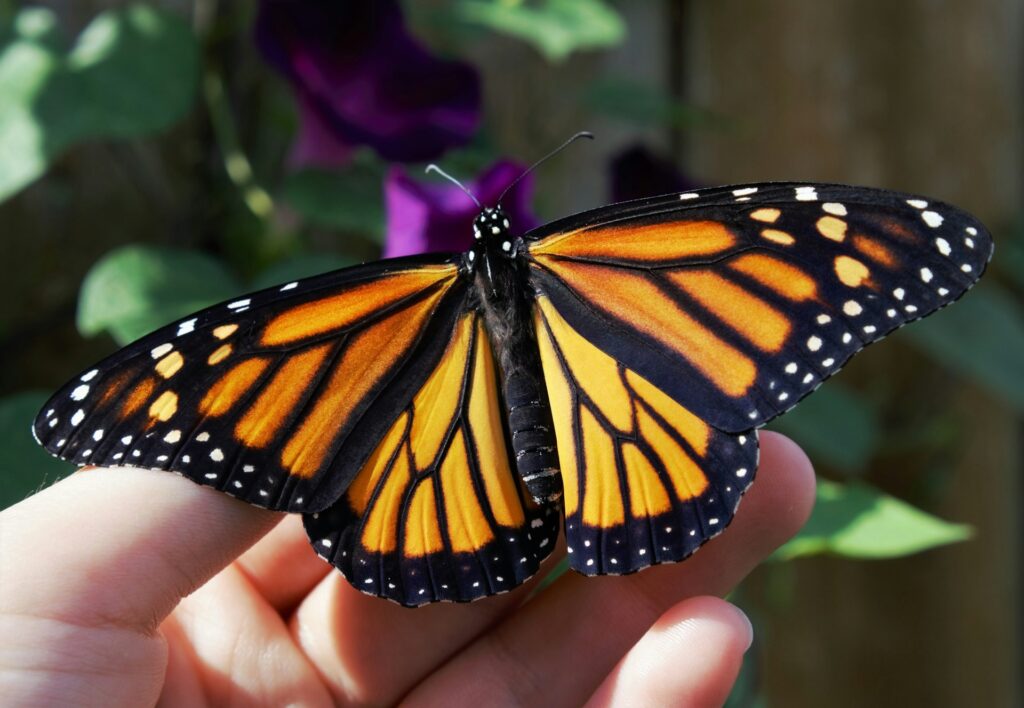
Many herbs produce small, nectar-rich flowers that butterflies love. Oregano and thyme are particularly good options that double up as kitchen ingredients and pollinator favourites. Letting your herbs flower instead of cutting them back constantly gives butterflies an extra reason to visit, and they’ll often choose herb beds over more dramatic blooms.
13. Avoid artificial turf and plastic plants.
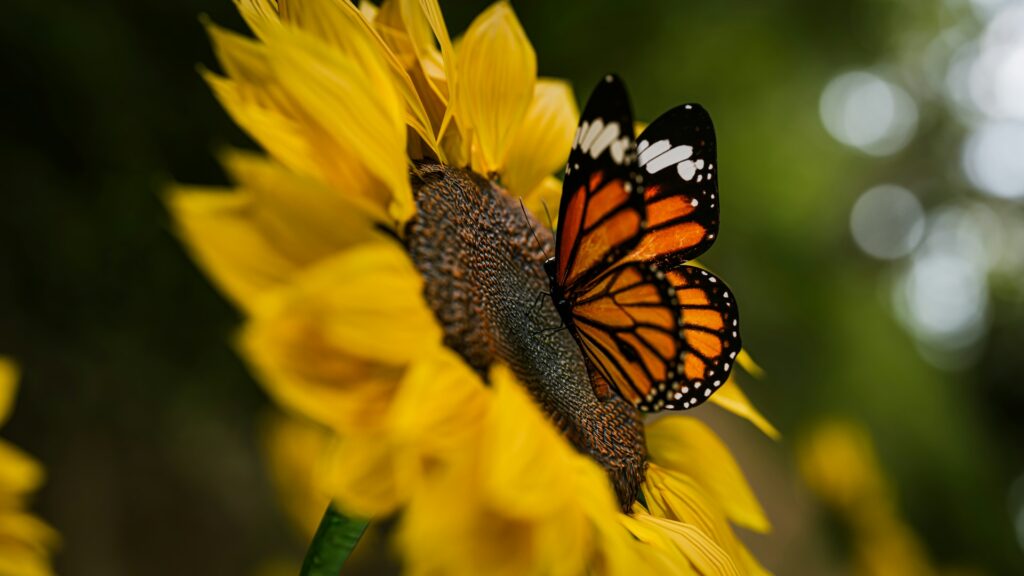
Butterflies don’t recognise artificial greenery as food. If too much of your space is fake or hardscaped, they’ll fly right by. It might look tidy to us, but it’s useless to them. Try to keep your garden as organic as possible. Real grass, native flowers, and natural soil all help create a functional, nourishing habitat that butterflies can actually use.
14. Keep your garden blooming across seasons.
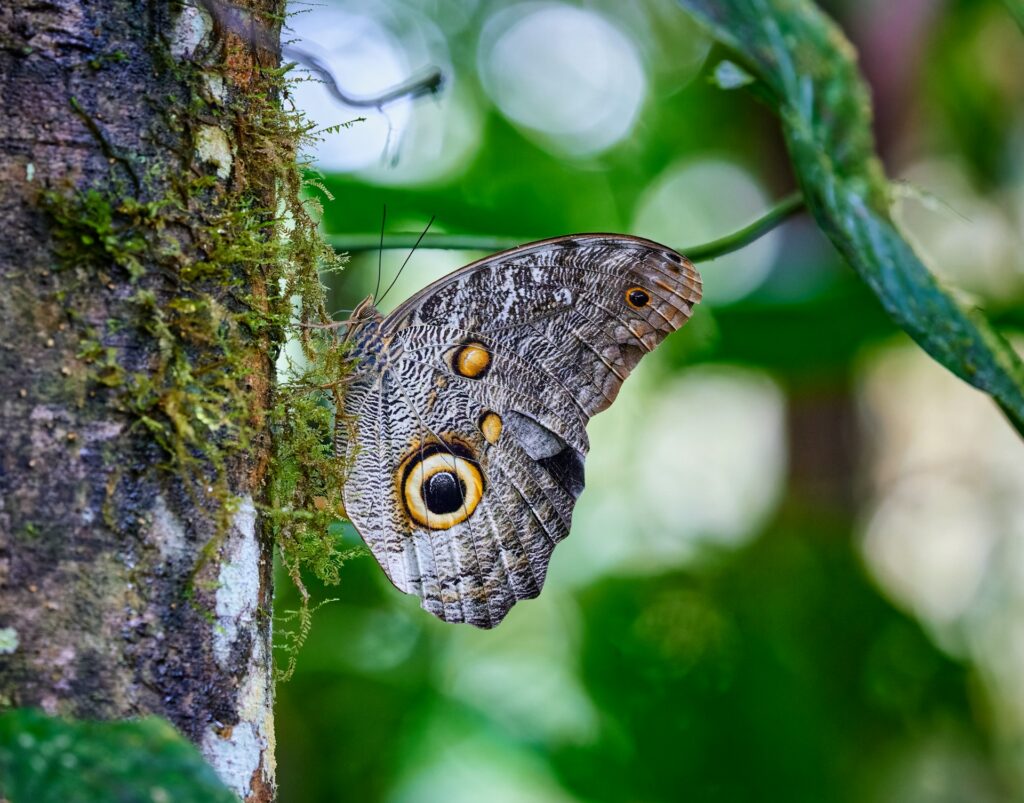
Butterflies are around from spring to late autumn, so it’s important to have nectar sources available throughout. Try mixing early bloomers like crocus and primrose with summer favourites like echinacea and late options like sedum. With a little planning, your garden can support butterflies all year long, especially important for those that breed or overwinter in your area.
15. Use planters or pots if space is tight.
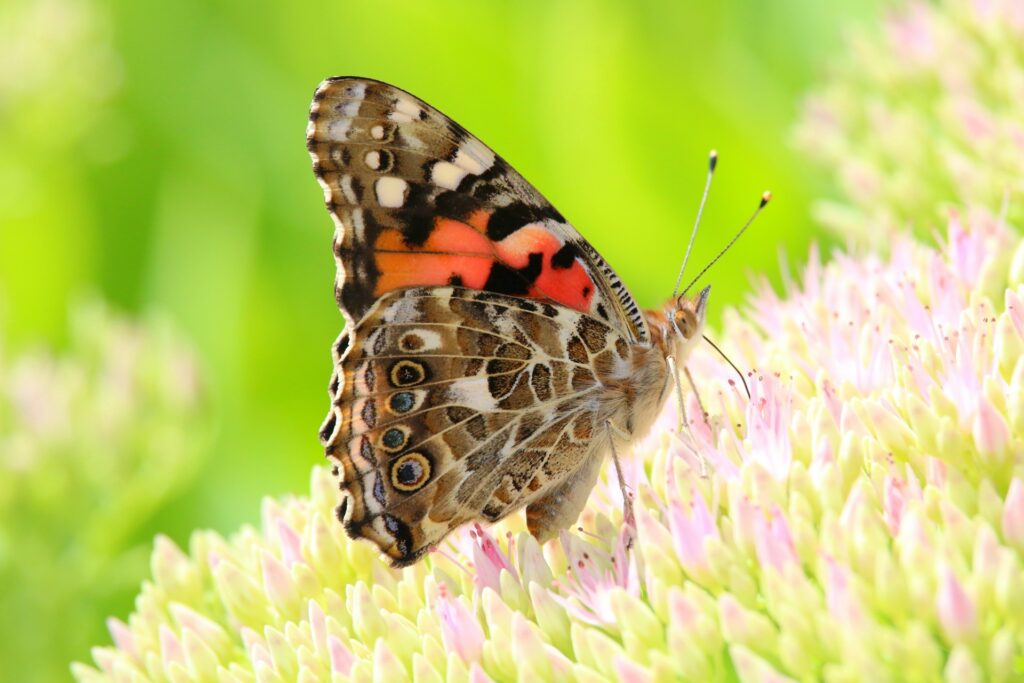
You don’t need a full garden to attract butterflies. A well-placed container with lavender or zinnias can do the trick on a balcony or patio. Even window boxes can become feeding stations. What matters most is the type of flowers you choose. Portable planters also let you move blooms into sunnier spots or closer to seating areas where you can watch the visitors up close.
16. Let ivy and climbers grow.
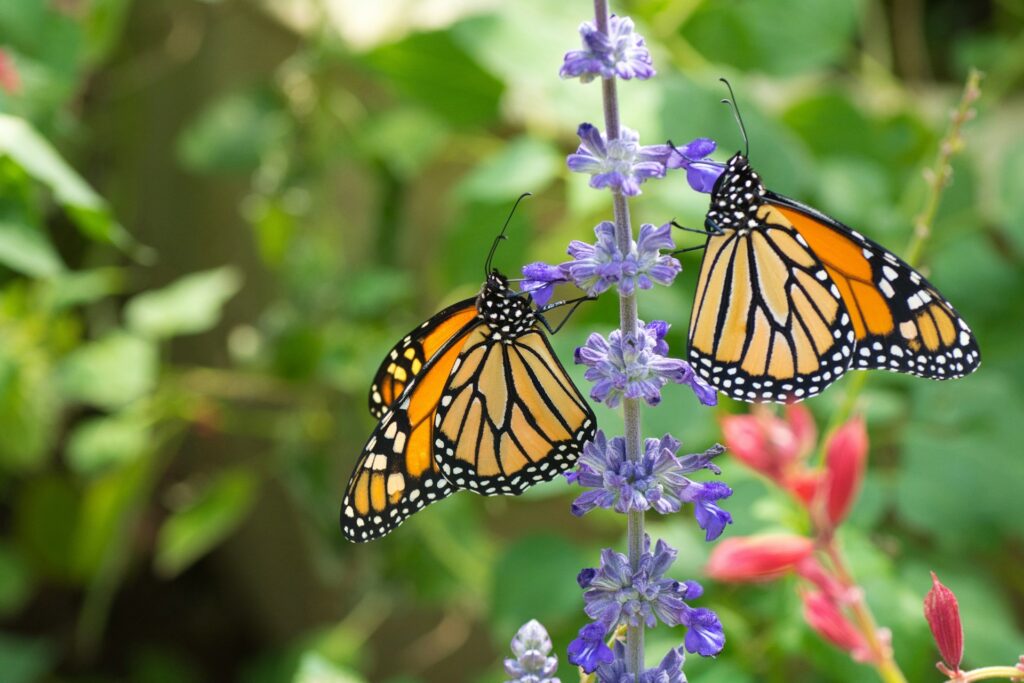
Ivy is often overlooked, but it provides excellent cover and late-season nectar when little else is blooming. It also gives shelter to overwintering butterflies like the brimstone. If you’ve got a fence, wall, or bare corner, letting ivy or honeysuckle grow can turn it into a useful part of your butterfly-friendly design rather than just filler.
17. Avoid deadheading everything.

While deadheading flowers keeps beds tidy and encourages new growth, leaving a few blooms to go to seed helps other insects and allows caterpillar-friendly plants to regenerate naturally. It’s a bit of a balancing act—enough trimming to keep flowers going, but not so much that your garden loses its wild appeal. Imperfection equals opportunity in the butterfly world.
18. Add rotting fruit for a treat.

Some butterflies are drawn to fermenting fruit, especially in late summer. Leaving out overripe bananas, peaches, or apples can attract species that aren’t as into flowers. Place them on a shallow plate in the sun, away from busy paths. It might not smell great, but it can create a fascinating little feeding station that draws species you wouldn’t normally see.
19. Create vertical interest.
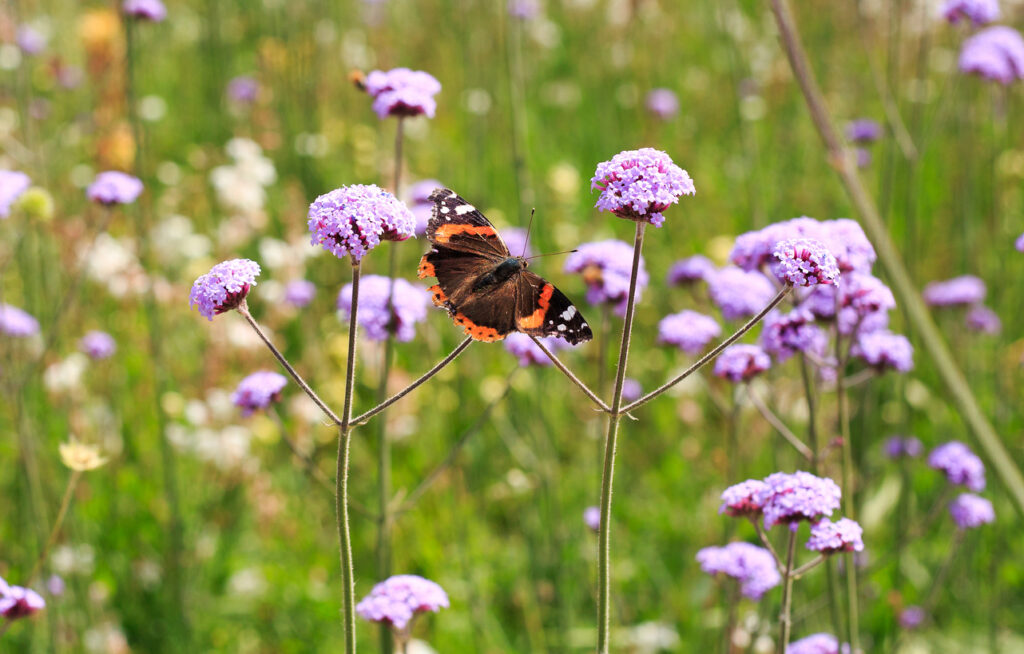
Butterflies like to flit between different heights. Adding trellises, tall flower spikes, and layers of planting gives them variety and helps mimic the more diverse environments they’d find in the wild. Try mixing low ground cover with tall sunflowers or hollyhocks to give butterflies options and create visual interest for you as well.
20. Keep it consistent year after year.
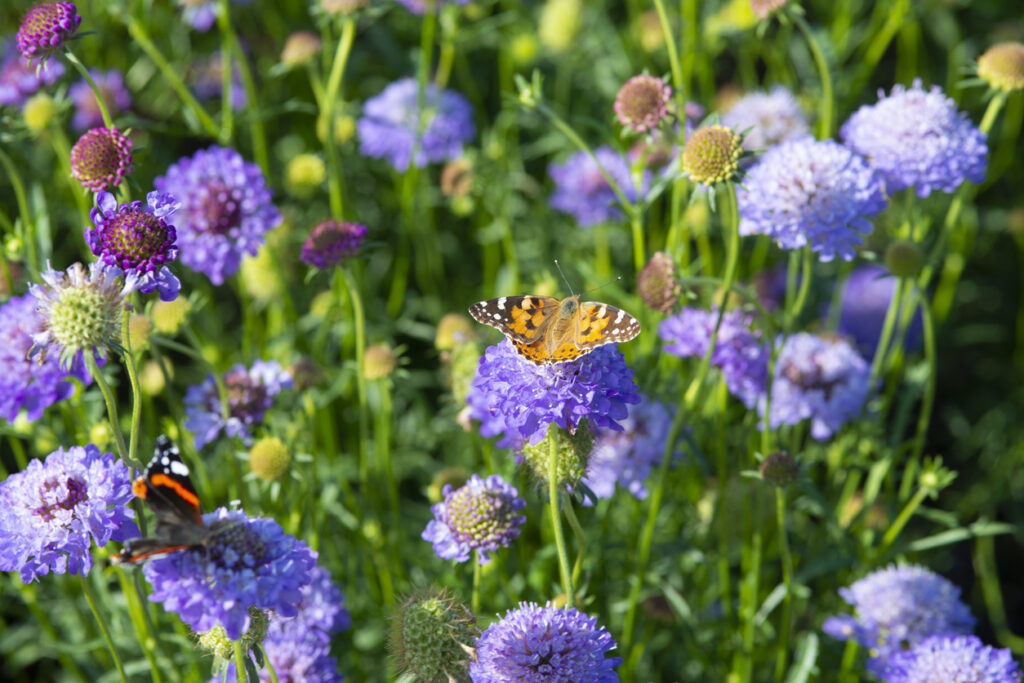
Butterflies are creatures of habit. If they find your garden one year, they’ll often return, especially if their offspring hatch and find the same reliable food and shelter sources. So, if you’ve made your garden butterfly-friendly, try to keep the essentials in place each year. Consistency helps create a mini sanctuary they can rely on, which is exactly what they need in a world of shrinking habitats.